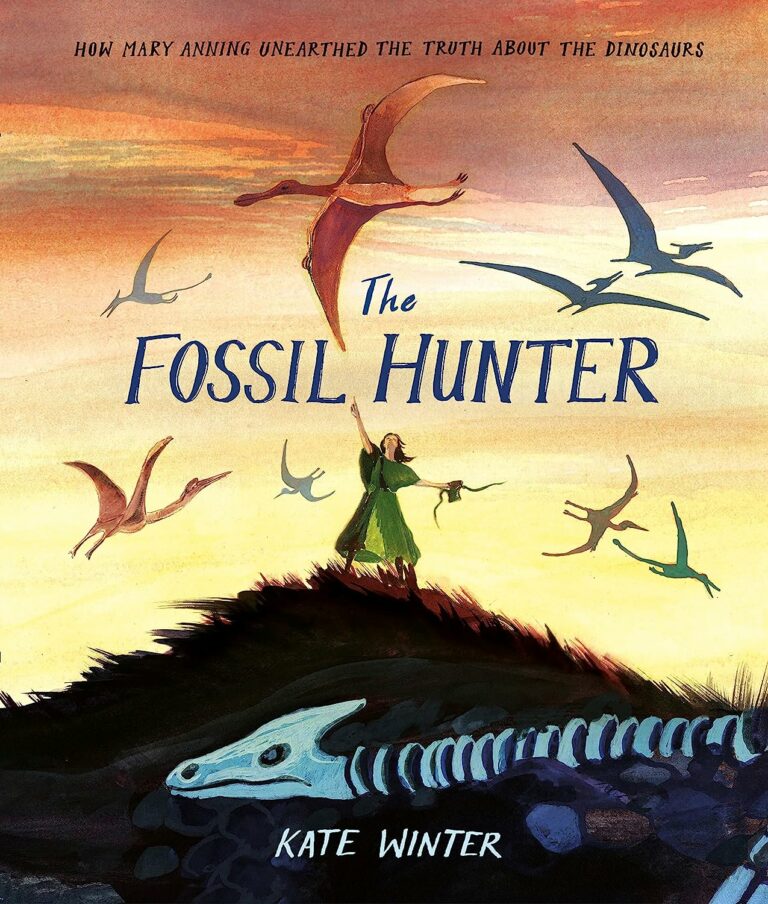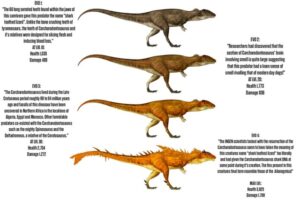Are Dinosaur Bones Real? Unearthing the Truth!
Dinosaur bones are real and have been studied extensively by paleontologists. These fossilized remains reveal much about prehistoric life.
Dinosaur bones, the fascinating remnants of creatures that roamed the Earth millions of years ago, continue to captivate scientists and enthusiasts alike. These relics offer a tangible link to the past, allowing experts to explore the evolution, behavior, and eventual extinction of these ancient animals.
Excavating, analyzing, and preserving these fossils is an intricate field within paleontology. Sites across the globe yield these prehistoric treasures, contributing to our understanding of the diverse species that once dominated the planet. Enthusiasm for dinosaur bones is not only academic; it fuels popular culture and inspires educational pursuits in earth sciences. As technology advances, methods of extracting and interpreting data from fossils grow more sophisticated, deepening our grasp of Earth’s geological history and the life forms it has supported.

The Discovery Of Dinosaur Fossils
The story of how we’ve come to understand the existence of dinosaurs is as large and mysterious as the creatures themselves. The discovery of dinosaur fossils has fascinated scientists and the general public for centuries. These relics from a bygone era offer a glimpse into a past world, dominated by giants that roamed the Earth millions of years before humanity’s dawn.
Initial Findings
Discovering dinosaur bones sparks a sense of wonder. Early fossil discoverers could scarcely believe their eyes. These initial findings often stumbled upon by accident, puzzled those who uncovered them. Mistaken for the bones of mythical creatures or giants, it took time for the true nature of these fossils to come to light.
- Astonishment at the size and uniqueness of the bones.
- Identification challenges in the 19th century.
- The first recognized dinosaur fossils named by Richard Owen.
Public Skepticism
The existence of creatures so vast they dwarfed modern animals was hard to swallow. Public skepticism ran rampant as tales of dragon bones and fantastical beasts mingled with scientific discovery. Skeptics demanded proof, and the scientific community rose to the challenge, providing evidence that would change perceptions forever.
- Debates raged over the authenticity of the findings.
- Exhibitions and public lectures helped to sway opinion.
- Fossil reconstructions became key in winning over the public.
Progress In Paleontology
Advancements in science turned skepticism into wonder. State-of-the-art tools and methods allowed for detailed excavations and analyses. With each discovery, the field of paleontology leapt forward, painting a clearer picture of these ancient titans. Researchers pieced together life histories, behaviors, and ecosystems from bone fragments that had laid hidden for eons.
| Century | Advancement |
|---|---|
| 19th | Establishment of paleontology as a science. |
| 20th | Use of radiometric dating techniques. |
| 21st | 3D scanning and digital reconstruction. |

Credit: www.amazon.com
Debunking Myths Around Dinosaur Remains
The very notion of dinosaur bones buried beneath our feet captures the imagination. Yet, myths persist about these ancient fossils. This section illuminates truths behind dinosaur remains, dispelling popular misconceptions and explaining the natural marvel that is fossilization.
Misconceptions About Fossil Fakes
Some believe dinosaur bones are fakes. This myth stems from a lack of understanding of paleontology. Experts can tell real fossils from replicas. Let’s expose common myths:
- Fossil replicas used in museums are often mistaken as evidence of fakery.
- Claims that scientists create these “bones” to support evolution are untrue.
- Real fossils may differ in color and texture, leading some to doubt their authenticity.
Science Of Fossilization Process
Fossilization is a rare event. It happens under specific conditions. Here is how it unfolds:
- A dinosaur dies and its remains settle in sediment.
- Over time, sediment layers build up, protecting the bones from elements.
- Minerals percolate into the bones, turning them into stone.
- Erosion or human activity may eventually reveal these stone bones.
In this miraculous process, bones turn into rock, creating the fossils we discover today.
Techniques In Authenticating Dinosaur Bones
Exploring the world of dinosaurs takes us back in time. Scientists use special techniques to tell if dinosaur bones are real. We will discover two main methods they use.
Radiometric Dating Methods
Determining the age of dinosaur bones is critical. Radiometric dating is a technique used to do this.
- Carbon-14 Dating: Measures the decay of Carbon-14 in organic material.
- Uranium-Lead Dating: Finds the age of zircon crystals in the bone.
- Potassium-Argon Dating: Used for older bones by measuring decay of Potassium-40.
Each method uses science to find out how old the bones are. This helps tell if the bones are from the time of the dinosaurs.
Comparative Anatomy And Dna Analysis
Scientists look at the shape and structure of bones. They compare them to other animals.
| Bone Structure | Similarities | Analysis |
|---|---|---|
| Hip Bones | Match with Reptiles | Shows evolution links. |
| Teeth | Similar to Crocodiles | Indicates diet patterns. |
DNA analysis can also provide clues. However, DNA is rarely preserved in fossils. When it is, it can confirm if the bones belong to dinosaurs.
Implications Of Fake Fossils In Science
The discovery of dinosaur bones is a monumental element in understanding our planet’s history. Nonetheless, the integrity of these discoveries holds utmost importance. Fake fossils can have far-reaching consequences in science, affecting not just the academic community but also public insight into paleontology.
Impact On Academic Research
- Research misdirection: Fabricated fossils can divert scientific inquiry down incorrect paths.
- Wasted resources: Significant time, funds, and effort may be spent studying false specimens.
- Erroneous data: Fake fossils skew the existing database, impairing future research.
Public Perception And Trust
Doubt in scientific integrity arises when fake fossils are discovered. This skepticism can diminish public support for scientific research. In turn, this erodes trust in authentic findings, affecting how society values and engages with science.
Famous Dinosaur Discoveries And Their Validity
Are dinosaur bones real? This question has intrigued people for years. Many fossils found across the globe tell a story of a past world, ruled by dinosaurs. Their bones have unlocked mysteries, shaping our understanding of these ancient creatures. But how do we know these discoveries are valid?
Scientists use careful methods to study these fossils. They look at where they are found and how old they are. This way, they prove that dinosaur bones are real and not just stories. Let’s dive into the tales of two famous dinosaurs.
Tales Of The Tyrannosaurus Rex
The Tyrannosaurus Rex, king of the dinosaurs, roamed North America. Its discovery shocked the world. In 1902, Barnum Brown found the first T-Rex skeleton in Montana.
Since then, over 50 skeletons have been found. Their sharp teeth and large bones are hard to miss. Experts test these bones to confirm they are millions of years old.
Triceratops: Fact Or Fiction?
The Triceratops is known for its three horns and bony frill. Some people used to think it was made up. But in 1887, a man named Othniel Charles Marsh changed that.
He introduced the world to the Triceratops. Thousands of bones have been found since then. These bones help scientists learn about its life long ago.
Did these giants actually exist or are they just good stories? The evidence points to them being real. Science backs up their existence with solid proof.

Credit: www.ebay.com

Credit: www.booksfortopics.com
Frequently Asked Questions On Are Dinosaur Bones Real
Have They Found Actual Dinosaur Bones?
Yes, paleontologists have discovered and confirmed actual dinosaur bones, revealing details about these prehistoric creatures’ lives and extinction events.
Are Dinosaur Bones Actually Bones?
Dinosaur bones on display are typically not real bones but replicas. The real fossils are hardened minerals that have replaced the organic material over millions of years.
Do They Use Real Dinosaur Bones In Museums?
Museums often display replicas, as real dinosaur bones are fragile and valuable for research. Original fossils are sometimes showcased under careful conditions to ensure preservation.
Did The Dinosaurs Really Exist?
Yes, dinosaurs did exist. Extensive fossil records and geological evidence confirm their presence on Earth over 65 million years ago.
Conclusion
Unearthing the truth about dinosaur bones has been a fascinating journey. Authentic fossils guide us through prehistoric times, intriguing scientists and enthusiasts alike. With diligent research and advanced technology, the reality of dinosaur bones stands firm. They ignite our imagination, grounding us in the puzzles of our planet’s ancient history.
Let’s keep exploring, learning, and marveling at these remnants of a world long gone.




